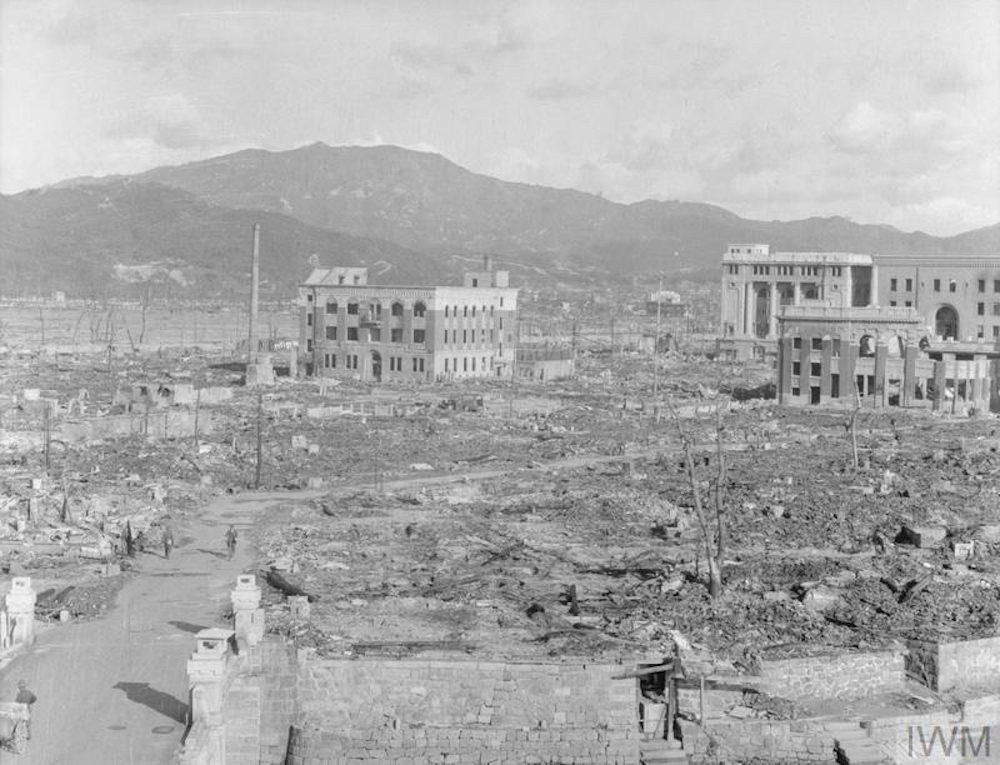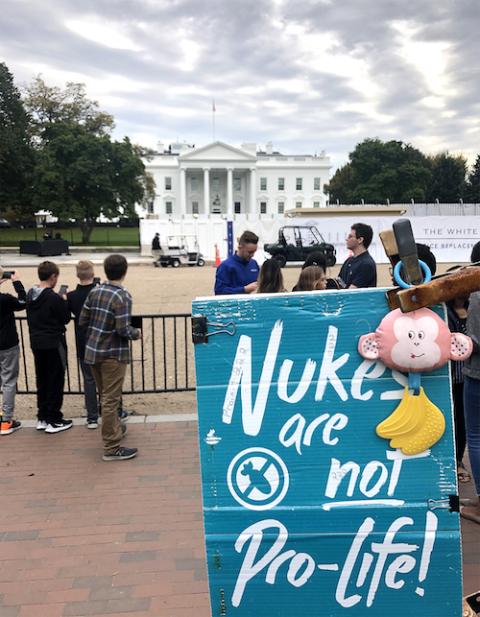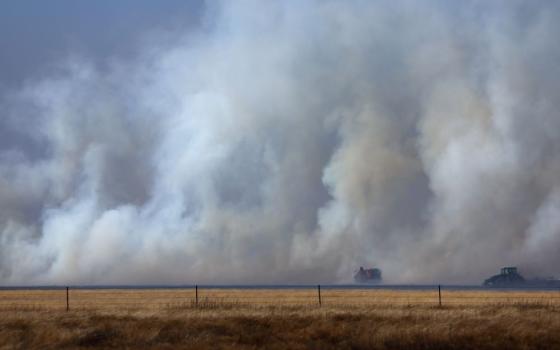
The burned remains of Hiroshima, Japan, after atomic bombing in August 1945 by the United States (MH 29447/Imperial War Museum)
At a time when major nuclear arms' treaties are being orphaned and climate disruption is ballooning, many are asking if there are connections between these twin threats to Creation. The answer is an obvious and uncomfortable yes.
Global nuclear peril has intensified in recent days, with Iran responding to Friday's targeted killing of General Qassem Soleimani with an announcement that it would abandon limitations on enriching uranium. The move further erodes the 2015 nuclear deal involving six major powers that President Donald Trump unilaterally undercut with his May decision to withdraw from the agreement.
Pope Francis noted the twin scourges of nuclear weapons and climate insecurity in his November visit to Japan and again when he addressed the nuclear threat in his annual World Day of Peace address. In the latter, Francis aligned his alarm about nuclear weapons with his call for more just economic systems and generous environmental protection. Like lifestyles that aggravate climate change, nuclear reliance is the antithesis of caring for our common home, the message of "Laudato Si', on Care for our Common Home."
Along with other senior scientists, the late Carl Sagan urged us to consider "nuclear winter," the name given to the prolonged darkness expected to arrive on the heels of nuclear war. Some or all of the planet will be darkened by the ash plumes of nuclear incineration. Photosynthesis will wane along with parts of the food chain, the habitats we take for granted and the healthy ecosystem services we depend on. Our largest nuclear fusion reactor, the sun, will be eclipsed by the effects of thermonuclear war on Earth.
Advertisement
Another climate connection to nuclear arms is found in human health and safety. Indigenous people have dwelt in radioactive landscapes as their homelands have been mined for uranium and designated as nuclear dump-sites. On a larger scale, according to Daniel Ellsberg's book, The Doomsday Machine, cities across the globe have become admissible nuclear targets, bargaining chips in the lethal game of deterrence. Contrary to international law, "enemy cities," their noncombatant inhabitants, and their urban ecosystems are premeditated collateral damage among doomsday planners. Ellsberg writes with first-hand knowledge as a former Pentagon war planner.
Climate abuse and nuclear arms are both subject to international law. Yet here again, Trump has disdained the Paris Climate Accords, undone various nuclear treaties, and further escalated the Iranian crisis by threatening to target 52 of the nation's cultural sites. Only after Defense Secretary Mark Esper told reporters that striking cultural sites that lacked military value would represent a war crime did the president back down on his threat.

A sign denouncing nuclear weapons is seen near the White House in Washington, D.C., Oct. 25, 2019. (CNS/Tyler Orsburn)
We might also fathom the ties between natural disasters related to climate disturbance and nuclear accident risk. Major forest fires have burned dangerously close to nuclear weapons production and storage facilities, including Los Alamos National Laboratory in 2011, where up to 30,000 55-gallon drums of plutonium-contaminated waste are stored above ground. In 2018, California's Woolsey fire began near the shuttered Rocketdyne facility, the site of a partial nuclear meltdown some decades ago and the subject of stalled cleanup efforts thereafter. Forest fires have recently raged in the "nuclear exclusion" zone of the former Chernobyl nuclear power plant, raising dangers of re-suspension and dispersal of contaminants from a site that has exposed millions of people to radioactivity for decades, along with their water, land and biosphere.
Beyond these conflagrations, climate deterioration means warmer, rising oceans. The Union of Concerned Scientists predicts flooding and abandonment of major naval bases along the U.S. East and Gulf coasts by 2050. The upshot is that major bases will be relocated in the coming decades, including the Kings Bay Trident Submarine base in southern Georgia. That facility gained fame when its security was breached in 2018 by seven religious protesters found guilty of various charges late in 2019. The world's largest naval base, at Norfolk, Virginia, now regularly sees the effects of nature as sea levels rise, and surge effects, high tides, and ever-intensifying hurricanes push costly relocation plans to the fore.
Climate disruption and nuclear build-out are causing fiscal fatigue. In 2017 the Congressional Budget Office estimated the 30-year cost of America's nuclear forces at $1.2 trillion. That year National Geographic reported that extreme weather, aggravated by climate change, costs our economy at least $240 billion annually when the health impacts of burning fossil fuels are included. This estimate leaves out the cost of multiple hurricanes and 76 western wildfires estimated at over $300 billion in 2017 alone.
The opportunity costs to society of these twin inconvenient truths are almost beyond comprehension. The $300 billion alone would provide tuition for the 13.5 million U.S. students enrolled in public colleges and universities for four years or go a long way to clean up our sprawling list of 1,400 Superfund sites.
Among these is the Oak Ridge Reservation in Tennessee. It is where the U.S. Energy Department produced enriched uranium for nuclear weapons and left mercury contamination that deprives residents of water that is drinkable and safe for recreation.
A final nexus between climate woes and nuclear preparations is the U.S. Department of Defense's insatiable appetite for oil. It is the largest institutional consumer of petroleum products on the planet as well as a huge emitter of greenhouse gases. Yet the Pentagon has a blanket exception to all international climate agreements. Just as the DOD spews greenhouse gases into the atmosphere, it generates, stores, transports and tests nuclear weapons that imperil the planet on an all-inclusive scale.
Environmentalists and nuclear protesters share an overlapping mission in saving our Earth. Pope Francis puts this imperative simply in Laudato Si': We must care for our common home. Bringing our society to its senses merits deep examination, discernment and commitment. People of all faiths should be speaking against these twin perils with one voice and one mind.
[Charles Geisler, Ph.D., is professor emeritus in the Department of Development Sociology at Cornell University; his research focuses on climate change, national security and adaptive land use.]






